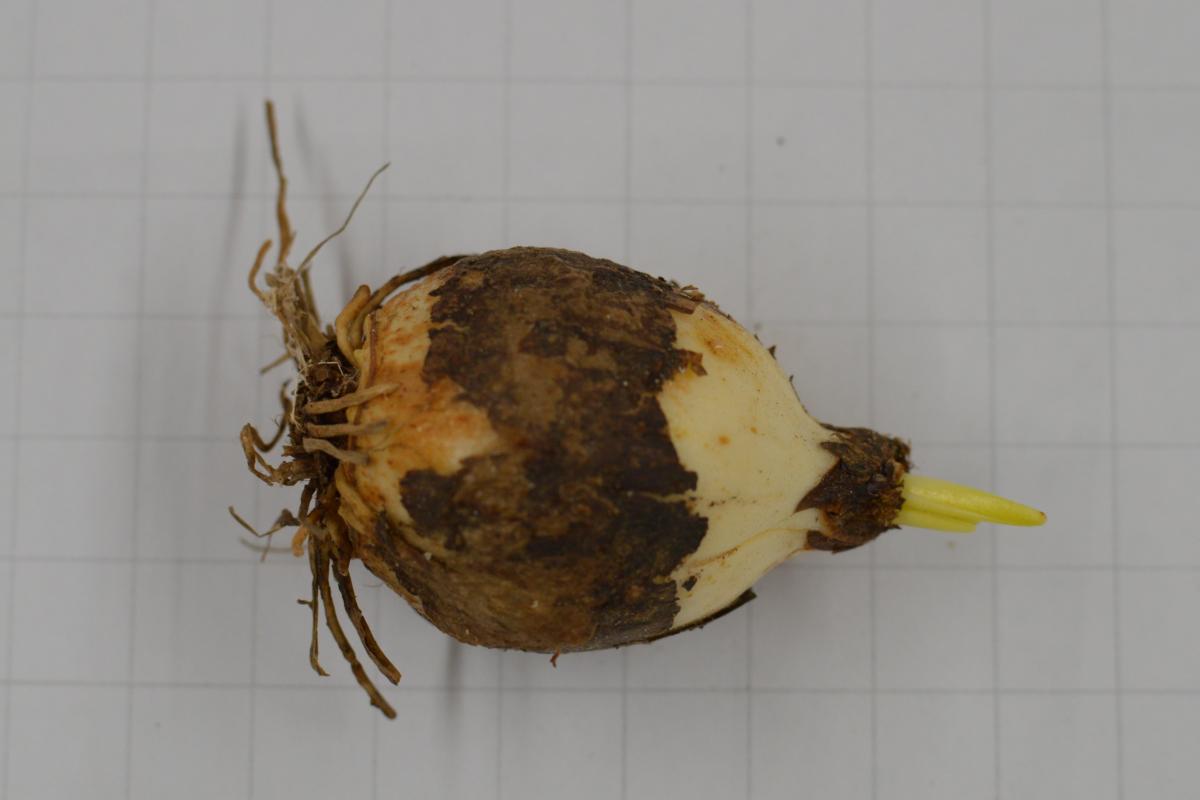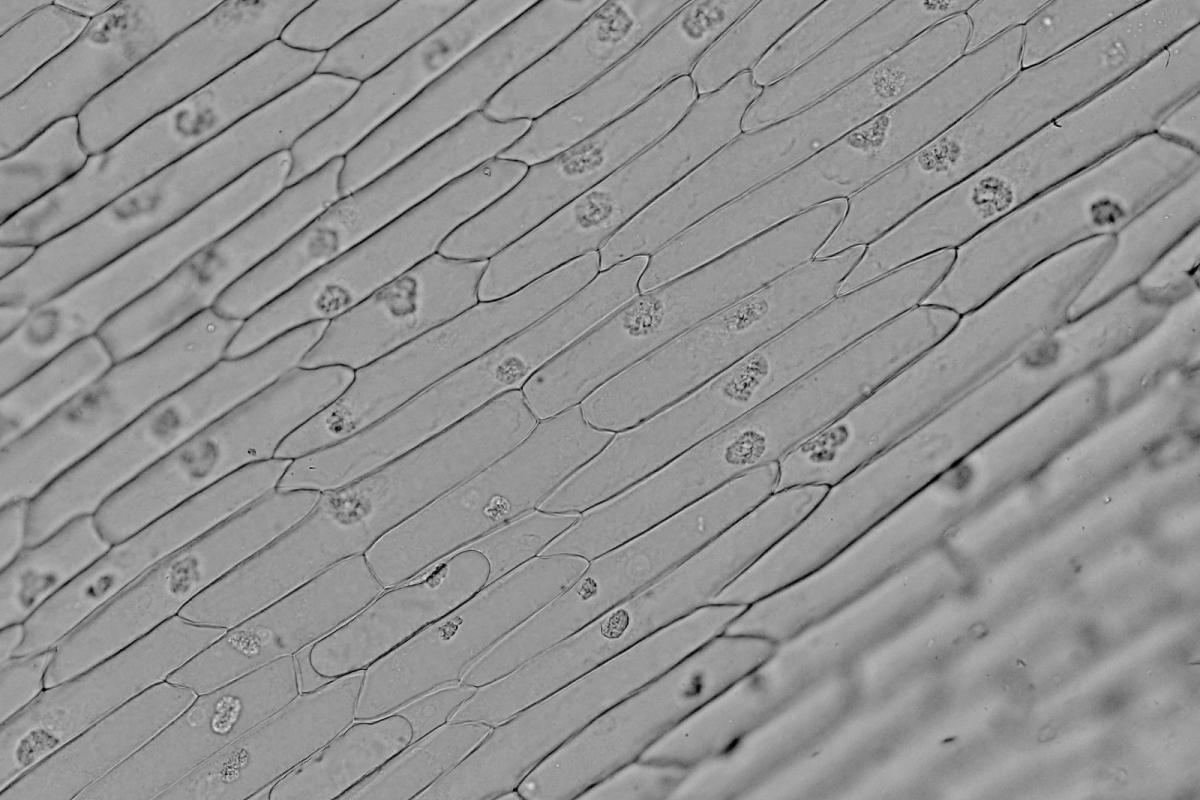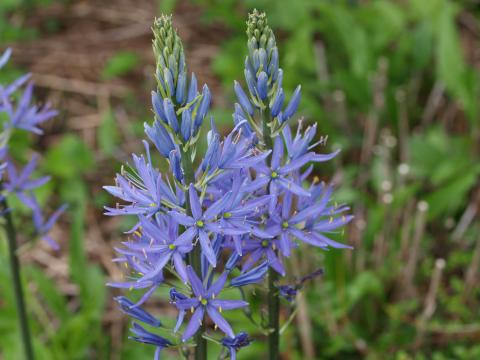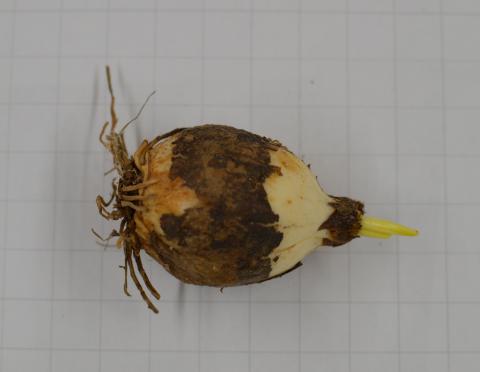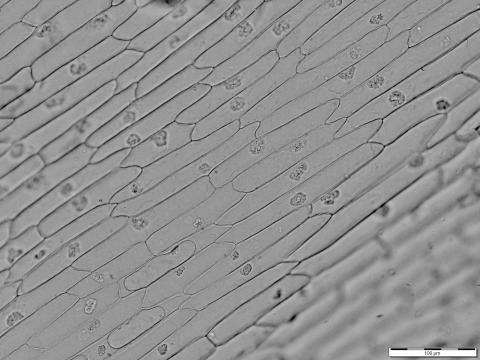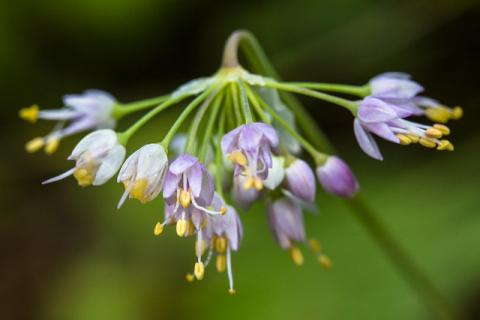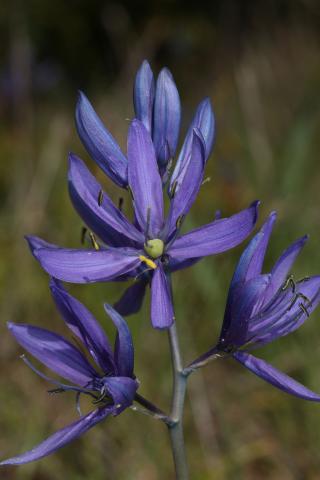Camassia leichtlinii
Camassia leichtlinii (Baker) S. Watson, or great camas, is chiefly distributed west of the Cascades, although there are several populations on the eastern slopes of the Cascade mountains. This bulbous, monocot ddd description. Geat camas is generally considered to be larger than common camas with evenly spaced petals.
Camassia spp. bulbs are tear-drop shaped with a medium to dark brown tunic.
Common camas bulbs were a staple food both all Northwest peoples, second only to salmon in importance. Camas was commonly traded across the region, and groups traveled far to harvest the sweet, inulin-rich bulb. Bulbs were harvested after the plant flowered, from May to early August. Bulbs were cleaned and steamed in pits for 48 hours. Once cooked, they were sometimes mixed with other foods or mashed into cakes and dried.
PALEOETHNOBOTANICAL IDENTIFICATION:
Camassia spp. bulbs are tear-drop shaped with a medium to dark brown tunic. Epidermal cells are generally visible under the microscope, although leaf scales often fuse from the pit cooking process and may appear glassy. Camassia leichtilinii epidermal cells average between 120-180 µm long by 20-50 µm wide, with many angular cell walls.
Great camas is often found west of the Cascades in perennially wet meadows, woods, prairies, moist hillsides, and streamside areas.


